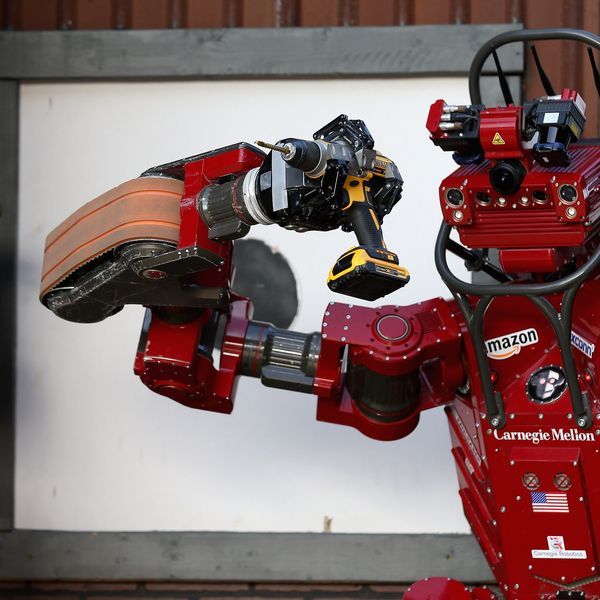Beware. "Killer robots" are on the rise, and not to be taken lightly, warns the U.N. Human Rights Commission in a draft report announced this week, which highlights the ongoing development of autonomous robots for use in combat by the world's leading military powers.
From the US military's "Phalanx system" for Aegis-class cruisers to Israel's "Harpy" project, a "Fire-and-Forget" autonomous weapon system designed to seek and destroy anything picked up by radar detection, the global military industrial complex is bringing unmanned tools of war beyond the semi-automated world of the drone.
In the report, author Christof Heyns, a South African professor of human rights law, draws attention to "a new generation of weapons" that are able to find and execute "targets" free of human control.
These "lethal autonomous robotics" or LARs, maintain the ability to make "decisions over life and death in armed conflict" that may otherwise "require compassion and intuition," limited to the human psyche, Heyns warns.
"Humans -- while they are fallible -- at least might possess these qualities," Heyns states, "whereas robots definitely do not."
Meanwhile, a coalition of non-governmental organizations (NGOs) have launched a global campaign calling for a pre-emptive and comprehensive ban on the so-called "fully autonomous weapon" systems.
This new coalition--called the Campaign to Stop Killer Robots and organized in part by Nobel Peace Prize winner Jodi Williams, who helped galvanize support for a global ban on landmines--takes seriously the threat posed by such systems and challenges governments to address their fundamental defects.
"There has to be discussion about technology that totally transforms war," said Williams, a US citizen, at the campaign's official launch last week in London. "If my country wants to call it a bloodless battlefield... I feel righteous indignation at the twisting of words."
In addition to the US, according to the UNHRC report, Britain, Israel, South Korea and Japan are among the other nations developing various types of fully or semi-autonomous weapons.
In his report, Heyns says that a "distancing" is created in recently developed tools of war, such as drones, which "enables those who control lethal force not to be physically present when it is deployed, but rather to activate it while sitting behind computers in faraway places, and stay out of the line of fire."
The catastrophic impact that drone-bombings and the U.S. targeted killing program--which has led to the death of thousands of people across the world with little oversight and almost no accountability--will be magnified by the use of LARs, Heyns warns.
"Drones do have human oversight," AP reports. "The killer robots are programmed to make autonomous decisions on the spot without orders from humans."
Heyns writes:
[LARs], if added to the arsenals of States, would add a new dimension to this distancing, in that targeting decisions could be taken by the robots themselves. In addition to being physically removed from the kinetic action, humans would also become more detached from decisions to kill - and their execution.
Heyns calls for an end to all "testing, production, assembly, transfer, acquisition, deployment and use" of these "killer robots" until an international conference can develop rules for their use. Heyns says he will deliver his message to a meeting of the Human Rights Council in Geneva at the end of May.
As AP summarizes, the report gives the following examples (among others) of fully or semi-autonomous weapons that have already been developed:
- The U.S. Phalanx system for Aegis-class cruisers, which automatically detects, tracks and engages anti-air warfare threats such as anti-ship missiles and aircraft.
- Israel's Harpy, a "Fire-and-Forget" autonomous weapon system designed to detect, attack and destroy radar emitters.
- Britain's Taranis jet-propelled combat drone prototype that can autonomously search, identify and locate enemies but can only engage with a target when authorized by mission command. It also can defend itself against enemy aircraft.
- The Samsung Techwin surveillance and security guard robots, deployed in the demilitarized zone between North and South Korea, to detect targets through infrared sensors. They are currently operated by humans but have an "automatic mode."
_______________________


